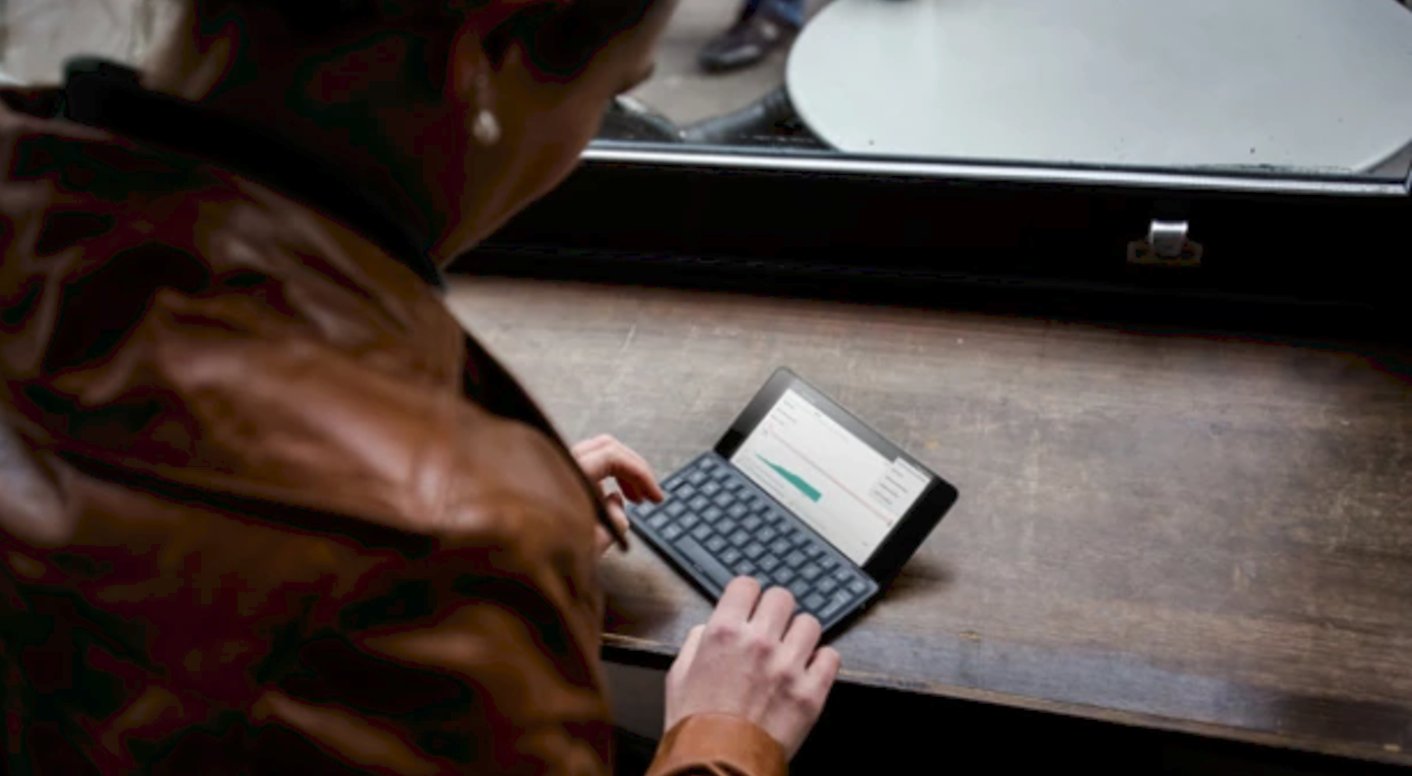A retro computer brings touch typing to a smartphone

The iPhone wasn't the first time that Apple had attacked physical keyboards in a product category. Among the Newton's contemporaries in 1993 were keyboard-equipped organizers from the likes of Sharp, Casio and the UK's Psion. The latter would create the pinnacle of palmtop keyboards with the Psion 5 and 5mx. It had a keyboard small enough to fit in a pocket but with raised keys large enough for touch-typing.
Like that of its competitors, Psion's hardware did not survive the smartphone transition. Some physical keyboard buffs embraced the thumb typing of the BlackBerry, but it was decidedly not a miniaturized laptop experience. For the past few years, it's been possible to pair a large smartphone with.a portable Bluetooth keyboard, some of which far exceed the comfort of Psion's but none of which are as compact, certainly without being folded.
Psion reborn? But this time it's Gemini PDA, an Android-Linux phone with full keyboard
Almost three years ago, I wrote how surprising it was that crowdfunding platforms, which had embraced much retro tech, had not yielded a slimmer, wireless reincarnation of the Psion 5. With some help from Indiegogo and a team known as Planet Computers, that product is now being developed as the Gemini -- with a keyboard and hinge mechanism designed by the same man who designed the Psion's's iconic input device.
The Gemini is not, as some may have hoped, an inexpensive word processor with, say, an e-paper display. Rather, it embraces such modern touches as dual USB-C connectors and a voice activation button. Its 5.7" display has the same 18:9 aspect ratio of the LG G6. It runs Android and Linux (but likely won't support Windows on ARM as it does not use a Qualcomm processor) and can optionally connect to 4G networks. Planet says users can expect two weeks out of the product's 8,000 mAh removable battery.
Best Android phones (March 2017)
While superior in virtually every way to its inspiration, the Gemini has some drawbacks. It can be used for voice calls but requires a headset or active speaker. Alas, the keyboard is not backlit nor can it wrap behind the device's display like a convertible notebook. and there is no rear-facing camera. And while the company says it is roughly the size of a modern smartphone, it is notably thicker with a depth of 13.5 mm. That may be a whole iPhone thinner than the Psion 5mx (which ran on AA batteries) but it's still a pocket-stuffer.
Despite the product being only in the concept stage, the Gemini has gotten off to a strong start, collecting nearly half a million dollars in its crowdfunding campaign. Beyond that, questions loom about the size of its niche, especially with a premium expected retail price of $599 for a Wi-Fi-only model. The Psion PDAs did not have to contend with the smartphone as the default device. With the long absence of palmtops in the market, we have adapted to getting more done without a horizontal surface to type on and software keyboards have improved tremendously since the first iPhone.
Still, the product reopens old options such as traveling with a simple, small phone for voice. The product might improve other options such as the value of a smartwatch for those who like the clamshell but find it inconvenient for checking notifications. But those buying into Gemini's promise must be prepared to give up some always-connected convenience for text creation productivity on the go.